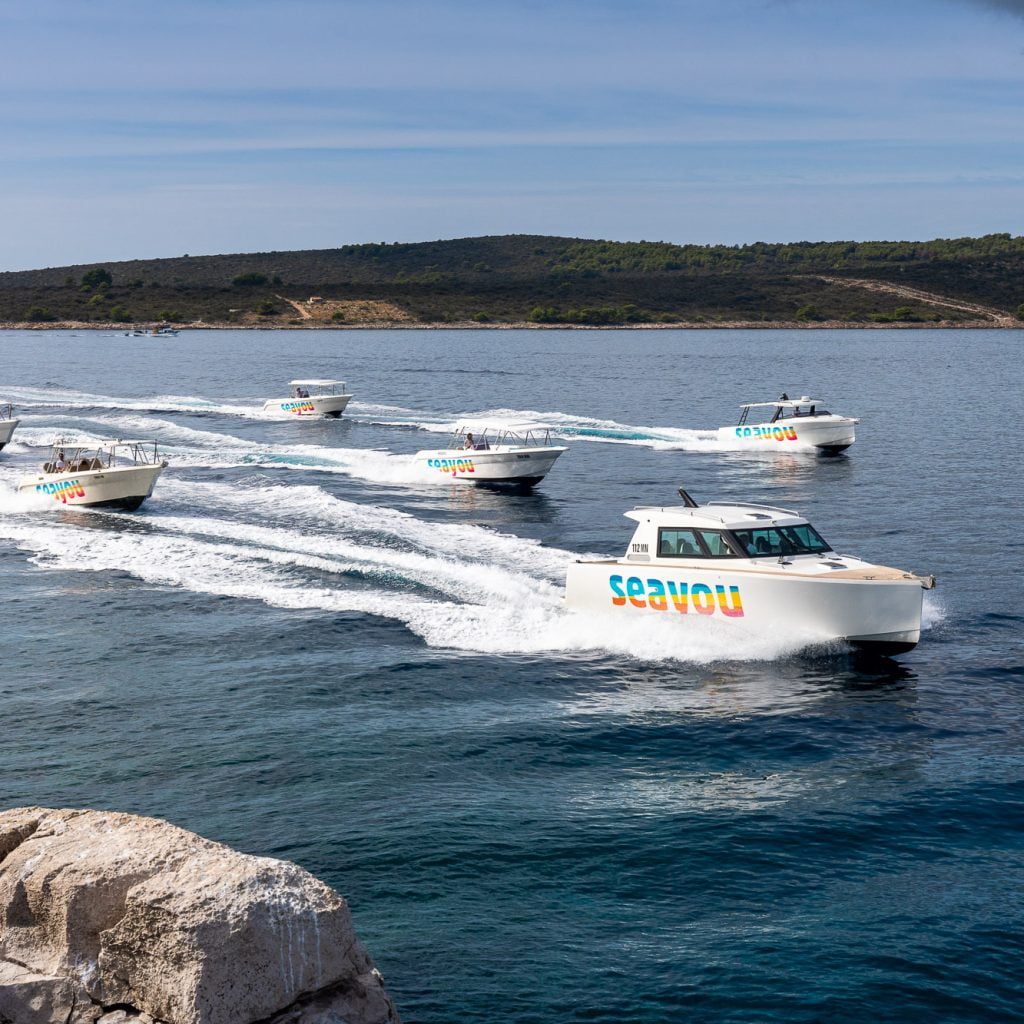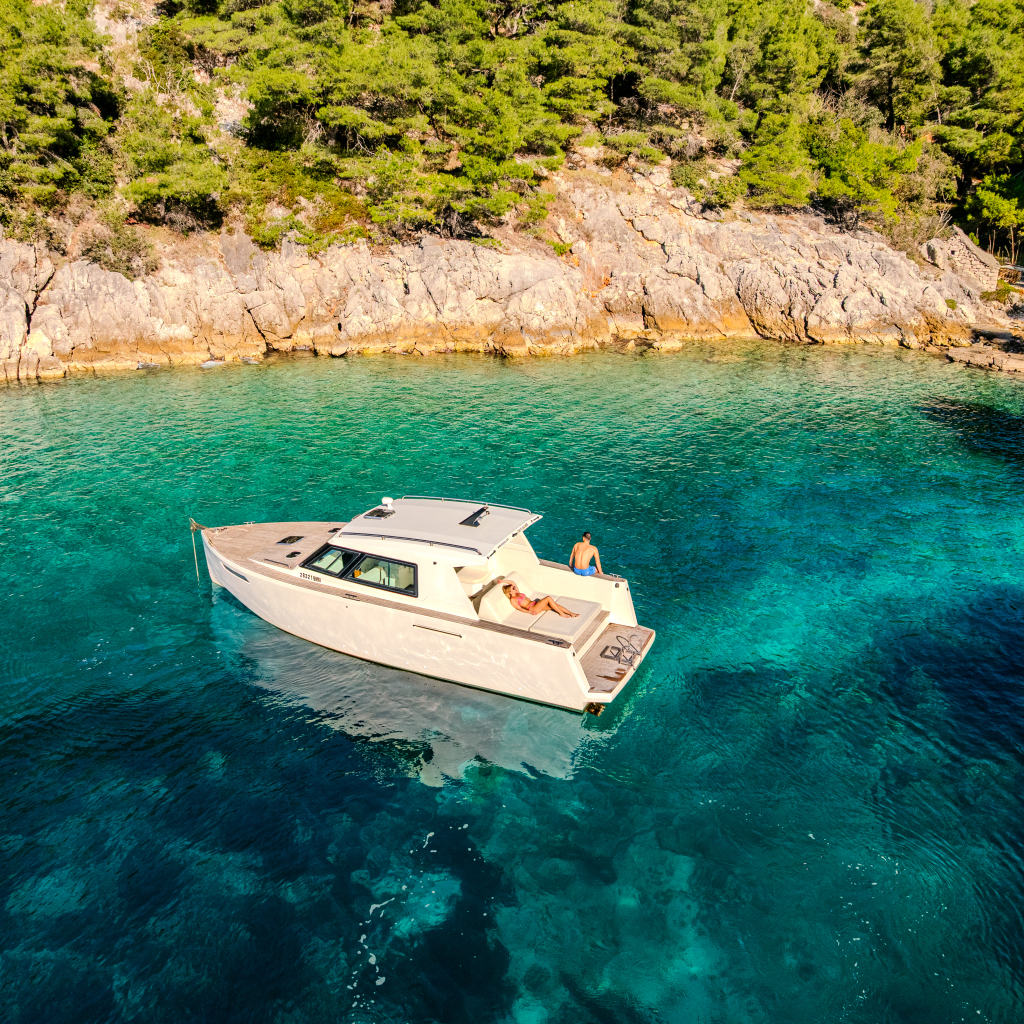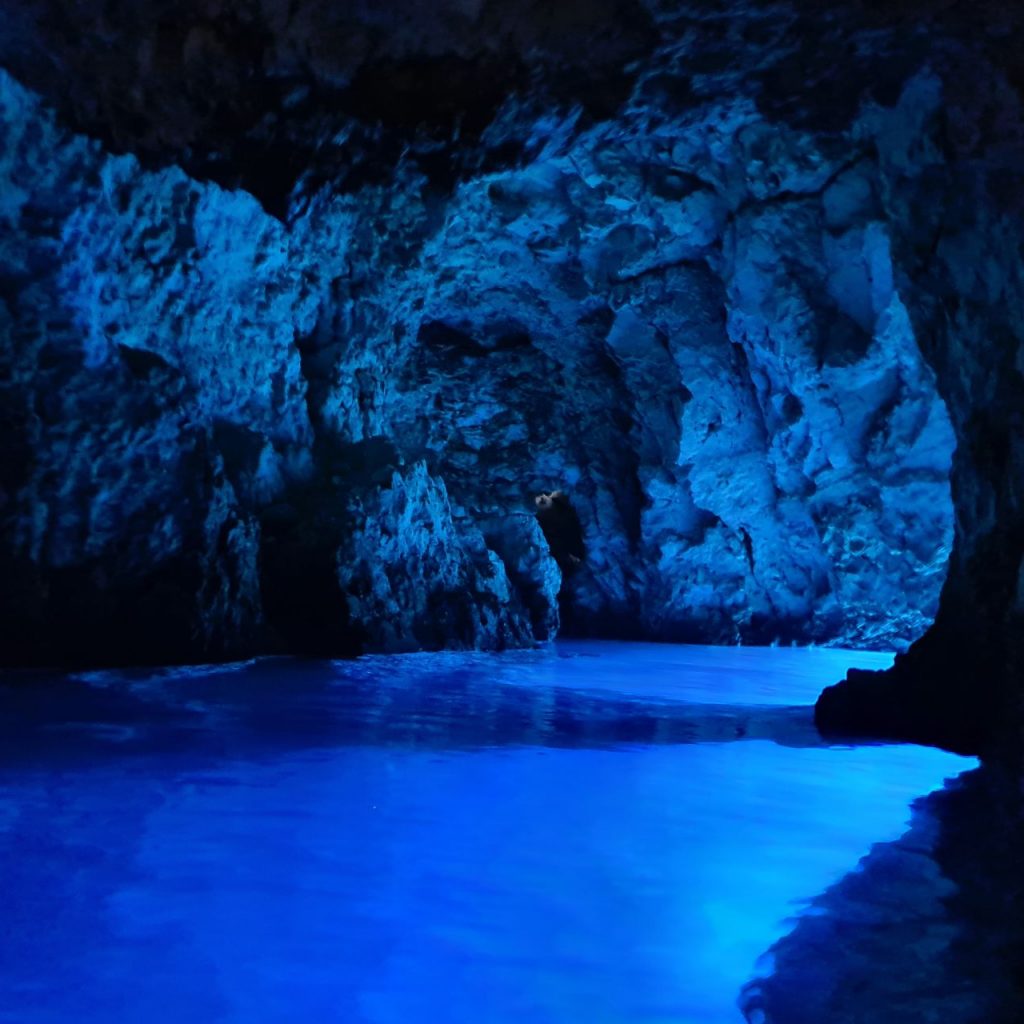Discover Brač island
Brač island in Croatia is the largest island of the central Dalmatian islands and the third largest among the Adriatic islands.
The nearest town on the mainland is Split approximately a 30 minute ride from Supetar the main town, with a speedboat, the fastest and easiest way of travelling. Private speedboat transfer is the most convenient way of getting to the other towns on the island of Brač as they are not all well connected with the local ferry lines.
Brač island is collared with a mix of sand and pebble beaches and rocky coves as the interior is a hilly countryside, ideal for hikers, cyclists and mountaineers.
Being one of the most popular islands that many tourist are eager to visit and explore in the summertime, check out the most interesting things to see and do in the island of Brač!
Also, check out sea temperatures in Brač to see if its okay to take a swim!
Enjoy the stunning view from Vidova gora
Don’t forget your camera for the perfect photo from the highest mountain on the islands of the Adriatic. Standing at the top of Vidova gora, Italy can be seen easily, especially on a clear sunny day or after the strong Dalmatian wind Bura – a cold wind that blows from the mountains clearing away all the clouds in sky.
For cyclists and hikers, the road up to the Vidova gora mountain is surrounded by beautiful nature and panoramic views of the islands of Brač and Hvar and the famous Golden horn beach. The summit is 778 m high. If you don’t prefer visiting Brač during the high Summer temperatures and if you aren’t into hiking, Vidova Gora is also easily reachable by car. The walk to the top takes around 1 and a half hours. Be sure to wear appropriate walking shoes and to have plenty of water as the road is rocky and the temperatures can get high.
Discover The Olive Oil Museum
Not far from Supetar, in the inland lies the oldest settlement on the island, Škrip. Rich in history this small charming village is a peaceful oasis away from the city crowds. The Museum of Olive Oil opened in May 2014 in Škrip. An old family mill was restored and first opened back in 1864. Valuable archaeological, ethnographic and cultural historical collections as well as traditional equipment and tools used for olive oil production are shown at the small family-run museum. This museum is an interesting place for olive oil lovers and those interested in the history and tradition production of olive oil. Not only go visitors get the chance to see the production process, they can also enjoy tasting olive oil, cheese and other local products.
At the small shop of the museum, the family sells their home made products such as olive oil, vinegar, jams, etc.
Enjoy your summer cocktail on the famous Zlatni Rat Beach (Golden Horn)
Golden Horn beach or Zlatni rat in Croatian, the long pebble beach at Bol town, which elegantly extends 500m into the sea, is the most famous beach and most popular attraction on the island. Along the seashore is a wonderful promenade leading from the town to the famous Zlatni rat beach surrounded with Mediterranean pine grove creating pleasant shade. Listed year after year as one of the top beaches in Europe, an unforgettable experience at this stunning beach is guaranteed. Chill in the morning sun and relax in nature. The path is lined with wonderful sculptures made from Brac stone and above you raise large pine trees. The influence of the stone masonry school can also be noticed in this part of Dalmatia, as a result the whole town is covered with sophisticated works of Brac stone.
An interesting fact about the Zlatni rat beach is that it naturally changes the direction of its top, due to the strong sea currents. Visitors can choose the windy side ideal for wind surfing or the other to enjoy the Summer sun. Due to its position, it attracts many visitors not only interested in swimming but in water sport activities, mainly windsurfing. Pedal boats, jet-skies, scuba diving, volleyball and other fun Summer activities are part of its offer as well as many cafés for those who fancy chilling with a Summer cocktail by the beach.
Zlatni Rat, one of Croatia’s most photogenic beach often seen in travel brochures, plays a starring role on Brac Island’s beach scene. Thanks to its distinctive fishtail shape, swimming and bathing is possible on both sides. It may appear as a sandy beach however it is a white pebbled beach.
Golden Horn is one most popular beaches on the island of Brac in the Bol area, however on the way to Milna there are beautiful hidden bays with turquoise water not overpacked with mass tourists.
Our local skippers on private tours enjoy showing guests secret bays with more privacy and untouched nature.
Milna – Valle di mille navi
The small town of Milna lies on the west side from Bol town. Long ago Italians called this small town “Valle di mille navi” which means a bay with thousands of boats. Milna was a port for merchant ships during the construction of Diocletian’s Palace in Split and yet to this day it has the function of the largest, most protected and most beautiful harbour on Brac.
Besides being an important nautical destination, Milna features four big pebble beaches – Osibova, Maslinova, Pasikova and Lucice beach. Two beaches lie in the town of Milna and the other two in the close vicinity. The beaches are surrounded with pine trees, which again provide the necessary shade in hot summer days.
Cultural sites on Milna, the baroque style Church of Our Lay of Annunciation, built in 1783. The church situated on the waterfront in the center of Milna has a church organ built by the Callido brothers from Italy in 1822.
In the charming Osibova Bay lies the church of St. Joseph from the 18th century with St. John’s Chapel from the 14th century. Enjoy the stunning view of the island of Hvar and Vis from this secluded bay.
Relax on Milna’s waterfront drinking your morning coffee with breakfast. After a day or so, the waiter will already know your name and your order without even asking. The friendly locals at this slow paced town welcome newcomers treating them as their own. For those coming back year after year, they definitely feel like family. This feeling is not as common in the top tourist destinations such as Bol or Supetar as it is in the small hidden gems of Brač.
Admire the miraculous Bonsai tree
Guess why the 600 year old church of St. Peter and Paul in the center of Nerežišća has been photographed almost as much as the famous Golden Horn beach? A miraculous bonsai tree grows on the roof of the church! You may wonder what is so miraculous about a bonsai tree. First, no one knows for sure how it got there, the locals assume its seed was blown on the roof or left by a bird. The church was built in 1413 and the oldest residents of the village believe the tree is 120 years old.
Another mystery to the locals is how the tree managed to survive all these years in unfavourable conditions. The high temperatures during the summers and the rocky roof of the church do not provide enough water leaving the people to believe it has extended its roots to the ground although there are no visible indications.
As it is specifically grows in higher altitudes, this tiny black tree is growing at it’s minimal possible altitude. It was declared a natural monument in 1969 and is one of the few types of natural bonsai trees in the world. The mystery of its origin, how it survives and how old it really is, as far as we know, will stay as a mystery.
Pustinja Blaca (Hermitage Blaca) visited by many tourists and locals is the most popular hermitage on Bol. As a significant part of the history of Brač, it’s not only famous for its cave monastery but also for its amazing cove surrounded by a dense pine forest and a beautiful beach deep in the cove. The monastery consists of a church, commercial building, printery, school, observatory and library. At present, Pustinja Blaca is a museum with its library featuring over 11.000 books and the third biggest telescope in Croatia. There’s no better place on the island of Brač to observe the stars and space.
If you speak Croatian, it won’t be of much help on Brač!
Even if you are familiar with the Croatian language that doesn’t necessarily mean it will be useful and that you will understand the locals when on Brač. Just like most of the other islands in Croatia, each with it’s specific dialect, the island of Brač has more than 10 different dialects sometimes even difficult for Croatians to understand them. As tourism has developed and English is studied at school, the majority speak English making it easier to correspond with visitors.
“Čigova je, judi, Mrduja?” – Pulling the small island of Mrduja
For centuries, it has been a dispute among two islands – Brač and Šolta, who owns the third small island Mrduja. Not too much bigger than a regular house, Mrduja is situated right between these two islands causing the locals to argue regarding the possession of the island. Till this day, once a year in August, the people of Milna on Brac and Stomorska on Solta, literally tie their boats to each side of the island of Mrduja and start tugging. The purpose of this satirical tug of war is to try to pull the little island closer to their side and claim it as their territory. The „war“ ends when a winner is awarded with the ownership of Mrduja for the entire next year (until they compete again). This has become a tradition for locals as well as for tourists. However, regardless of the competition and the winner, administratively, Mrduja belongs to Brač and no matter how hard Šolta pulls that fact doesn’t change!
Brač the perfect getaway for families
The small seaside towns on the island of Brač have a lot of open spaces, playgrounds and pedestrian zones where there’s no danger of traffic. The seafront promenades ”riva” are perfect for strolling and letting toddlers run around and observe the fish in the sea while parents enjoy their coffee in the sun.
Discounts for children are widely available from museum admissions, day trips to hotel accommodation. The safe beaches, hiking and biking tracks suitable for all ages and the ancient towns and fortresses are great for wanna-be knights and princesses to explore.
Relax on the only sandy beach on Brač
Lovrecina beach located on the northern side of Brač near the charming town of Postira is a wonderful sandy beach and popular tourist resort. The sand on the beach and in the sea stretches for almost 100 m making it suitable for children. Surrounded by pine forests it offers natural shade in hot summer days while enjoying the clean shallow sea. The beach set deeply in a bay can be reached by car, foot or from the seaside.
At the archaeological site nearby lie the remains of the St. Lawrence basilica from the 5th and 6th century. We can assume that the ancient Romans also enjoyed the natural beauty of Lovrečina.
A taste of local cuisine for the perfect holiday
The food prepared on the island of Brac is mostly local, organic and of course seasonal. The food culture of the island has a long tradition and mainly consists of freshly caught fish from the sea, home grown vegetables, sheep and goat cheese from the inland, extra virgin olive oil from olive trees centuries old. The southern part of the island of Brač is known for excellent home made red wine – Plavac mali.
Put down your camera or mobile phone
Enjoy the full experience of your holiday and sense it with your eyes, ears and nose. Don’t watch it through the lens or screen on your camera. It doesn’t matter if your photos aren’t posted on social media every day of your holiday, enjoy the moment creating memories to cherish when you return home.
Read more of our Stories of the Sea
Our Sea of Stories: Reviews and Testimonials
Spend an unforgettable day at sea on a SeaYou boat tour visiting the Blue Cave, Hvar, Vis, Šolta, Korčula or Dubrovnik.
Choose the most suitable group tour or a tailor made private boat tour.
- +38591 2636 805
- booking@seayou.com
- Ul. kralja Zvonimira 33, 21000 Split
- Riva 6, 21405 Milna, Brač
- SEAYOU COPYRIGHT 2025




